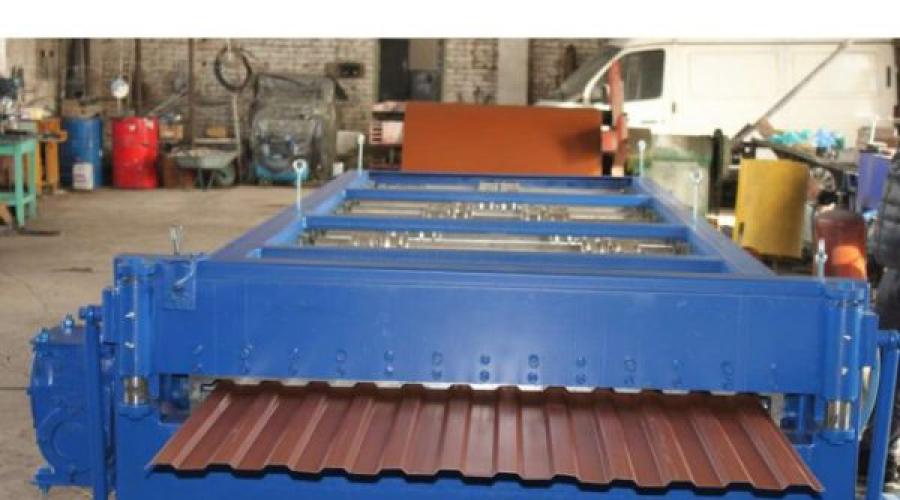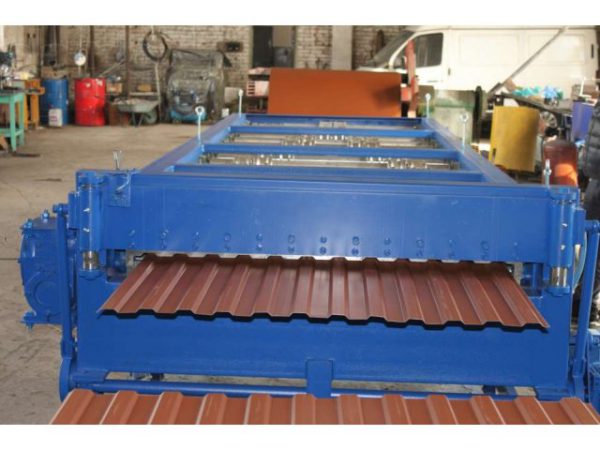Decking weight: how much does a sheet and 1 m2 of popular material weigh?

At present, when the construction market is replete with a variety of roofing materials that suit the taste of each buyer, it is not difficult to find an attractive and reliable coating that combines practicality, durability and attractive appearance. Experienced builders consider corrugated board to be a universal option for a roof of any size, shape and slope, the main advantage of which is its small mass. The size and light weight of corrugated board makes it possible to lighten and simplify the roof truss frame, which reduces the financial costs of roofing. In this article we will tell you how much 1m2 of profiled sheet of the main brands weighs.
Profiled sheeting is called an affordable, practical roofing material, which is made of thin rolled steel in the form of rectangular sheets of different sizes with a trapezoidal profile extruded into it by a special press. It is made of galvanized steel with paint or polymer coating, which increases the anti-corrosion properties of the material. Manufacturers produce load-bearing, wall and universal profiled, differing in thickness, weight and profile height. Roofs covered with this inexpensive material have the following advantages:
- Light weight corrugated board. It weighs less than any other modern roofing material, reducing shipping, framing and installation costs. The weight of 1 m2 of profiled sheet does not exceed 8-10 kg, while 1 m2 of traditional ceramic tiles weighs 35 kg.
- Durability. The resistance of the material to corrosion, temperature changes, fungus and rotting make corrugated board a reliable and durable roof covering that can withstand 15-15 years of intensive use.
- Strength. Profiled sheets have a high bearing capacity, thanks to which they can withstand a significant snow load.
- Ease of installation. The standard dimensions of the sheet of material are suitable for an economical covering of the roof of any area, in addition, installation is carried out without the use of special equipment or tools.

Note! The light weight of corrugated board allows this durable, reliable roofing material to be used for the reconstruction or partial repair of old slate or tile roofs without dismantling the structure over the worn coating.
Weight of the main brands of corrugated board
Steel profiled sheet is used to perform many construction tasks: roofing, construction of temporary or permanent fences, fences, construction of garages or hangars, wall cladding. Each type of profiled sheet has operational and technical characteristics suitable for a specific application:


Important! To calculate the roof truss frame, you need to know exactly how much a square meter of roofing weighs. This data is used to calculate the total load that is placed on the structure in order to determine the thickness as well as the composition of its elements.
Criterias of choice
Experienced roofers know that the thicker the profiled sheet, the more reliable it is. Thicker material resists corrosion more effectively, withstands more intense snow and wind loads and, as a result, is used longer. However, such brands increase the load on the roof truss frame, and also cost more. The following factors influence the weight of corrugated board:
- steel thickness. The thicker the steel billet used for the production of the material, the heavier the corrugated board. Therefore, load-bearing brands weigh much more than wall ones.
- The metal content of the alloy. The composition and characteristics of steel affect the weight of the profiled sheet, so before buying, you need to familiarize yourself with the quality of the metal. In order for the roofing coating to be durable, it is necessary to choose premium galvanized steel grades with a higher metal content of the anti-corrosion coating, which weigh more.
- Wave height. The higher the wave, the greater the weight, as well as the bearing capacity of the material. However, a high profile reduces the useful area of the corrugated board, increasing the consumption of the coating.


Professional craftsmen argue that when it comes to choosing corrugated board for roofing equipment, it is important to strike a balance between sufficiency and necessity. In an attempt to find the most durable and reliable coating, you should not purchase 1 mm thick corrugated board, which significantly increases the weight of the roofing pie. To cover one-story and outbuildings, they recommend choosing grades with a thickness of 0.5-0.6 mm, and for two-story private houses - 0.7-0.8 mm.